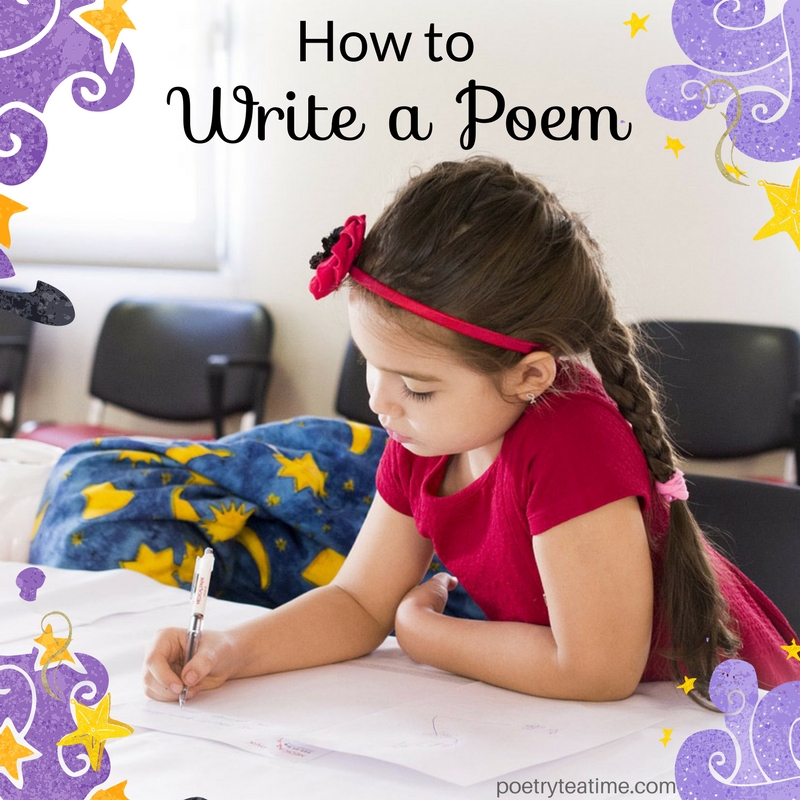Last week we discussed some myths about writing poetry. Now, it’s time to get down to business and actually write a poem! Grab a pencil and paper and buckle up for plenty of ideas for poems, ways to brainstorm your poem idea before you start writing, and strategies for writing your poem.
The steps listed below are going to take you from not having an idea through developing your idea and writing a poem. Everyone writes in a different way, but these suggestions will give you some ideas for easy ways get started. As you write more poetry, you’ll begin to figure out what writing habits and steps work best for you.
Steps for Writing a Poem
Brainstorm: The hardest part of writing a poem is deciding where to start. Focus on an idea that’s personal to you. You want your poem to be something only you can write. Here are some suggestions for inspiration. For each of these categories, jot down one or two ideas that come to mind.
Fears, hopes, and excitements: What makes you worried? Jump with joy? What’s something you’re looking forward to?
What you see: Look around you. Is there a favorite picture hanging in your room? Do you have a stuffed animal you sleep with?
What you wonder about: No question is too silly—in fact, sometimes, the sillier the better! Is the sky made of cotton candy? Why do trees lose their leaves?
Concerns about the world: Is there something happening in the world right now that makes you angry or that you want to change? Is there an area where you’d really like peace or justice to happen?
A favorite memory: Think back on some of your favorite moments and write them down!
Narrow down: Pick your favorite idea from the list you’ve brainstormed. Then, think about one moment or image that reminds you of that idea. Think small.
Form-writing: Decide if you want to write your poem in a specific form like a sonnet or a haiku.
Look up the rules for that form and have them handy. It might also help to have a rhyming dictionary like RhymeZone open while you write for when you get stuck on words.
Before you begin, jot down ideas for the beginning, middle, and end of your poem. If it’s about one image or moment, how does that image start to appear? When does it end or go away?
Once you have some ideas of where to start, dive right in! The rules for the form you’re using will help you know when to end each line and where to end the poem.
Free-writing: If you’re writing in free verse (without a set pattern of rhymes and rhythm), here are some steps to follow.
Think about the image you chose and start writing in fragments (parts of sentences) about your idea. Forget about grammar and get your thoughts on the page.
Whenever you have a new thought or if you want the next words to be a surprise, start on a new line.
End your poem whenever you’ve finished talking about the one image.
Congratulations! You’ve now written a poem! But remember, what you have now is still a draft, not a finished poem. Check back in next week for some suggestions on how to revise your poems!



